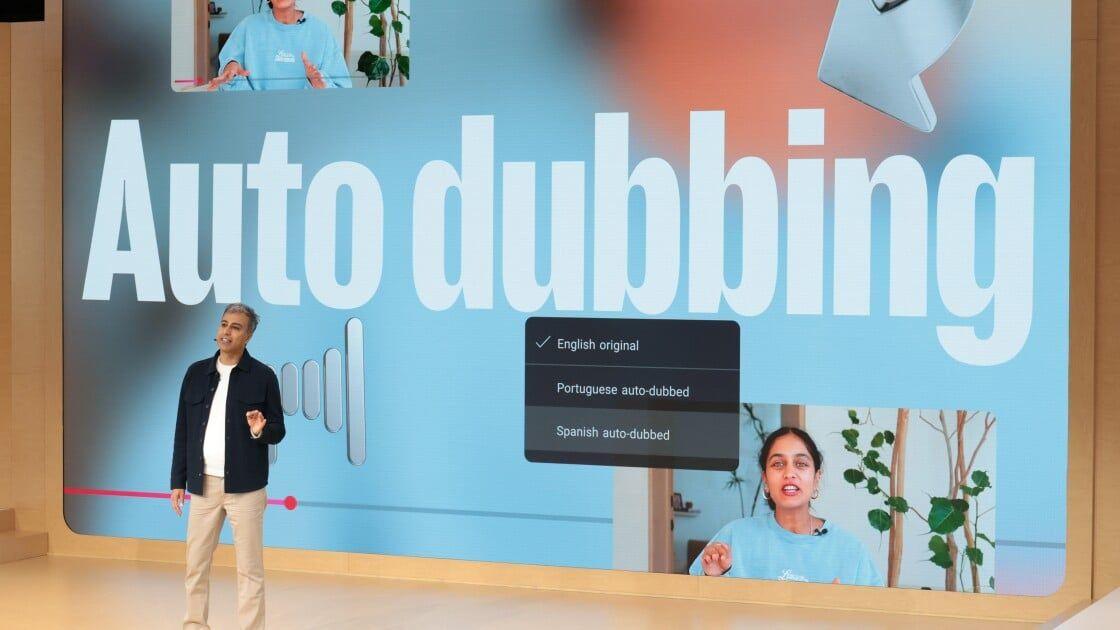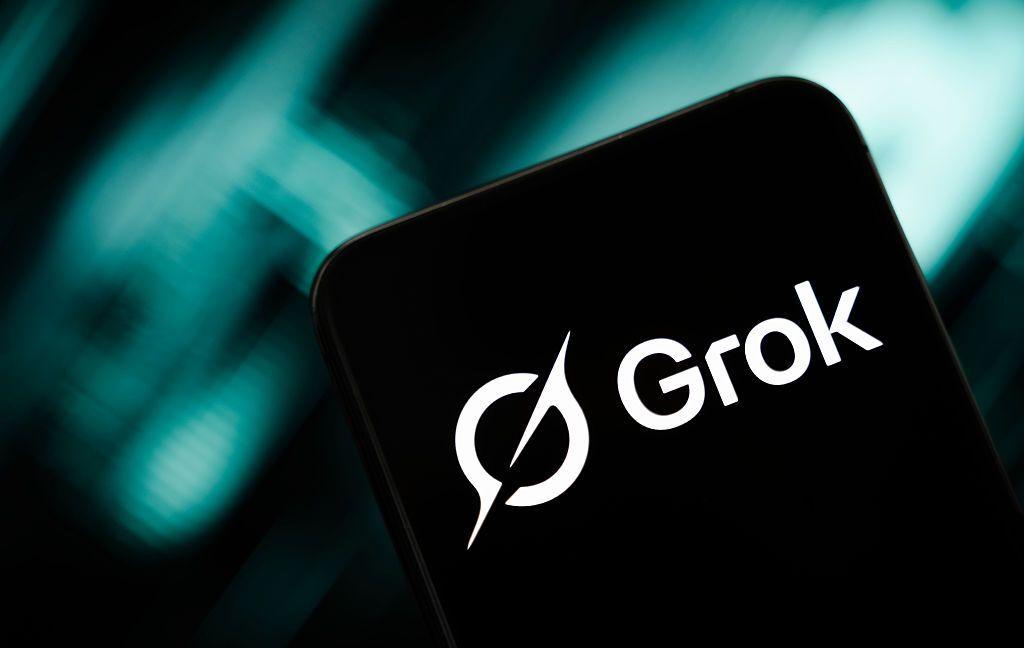YouTube Expands AI-Powered Auto-Dubbing Feature for Global Content Accessibility
2 Sources
2 Sources
[1]
Get ready for AI-dubbed YouTube videos | Digital Trends
YouTube has reportedly started rolling out a new AI-empowered translation feature for its content creators, one that will automatically redub a video's contents into one of nine languages without changing the speaker's voice. According to a post from X user @levelsio, "YouTube will now auto dub videos in English, Spanish, Portuguese, German, French, Italian, Hindi, Indonesian and Japanese" and "will use AI to take the original voice but change the language." Recommended Videos The new feature will arrive to creators' channels in the coming weeks but will only be available to newly crafted content, rather than existing videos, to start. I said podcasts but it's happening on YouTube first: YouTube will now auto dub videos in English, Spanish, Portuguese, German, French, Italian, Hindi, Indonesian and Japanese The dubs will use AI to take the original voice but change the language (like @lexfridman's podcast... https://t.co/1awdnDF8lk pic.twitter.com/KhelUxtLZL — @levelsio (@levelsio) November 21, 2024 The auto-dubbing feature was first announced in September at the company's "Made on YouTube" event. At the time, a YouTube spokesperson explained, "in the coming months we'll be expanding our AI powered dubbing tool, formerly known as 'Aloud,' to hundreds of thousands of creators," as well as adding additional languages beyond the English, Spanish, and Portuguese available for beta users. "Once creators have access, their videos will be automatically dubbed upon upload, with the ability to opt out if they so choose," the spokesperson explained. Expanding Auto-Dubbing to More Creators - Made on YouTube Recap! YouTube is not alone in its AI translation efforts. In 2023, Spotify announced a similar feature that reportedly creates "a more authentic listening experience that sounds more personal and natural than traditional dubbing." Upon its release, users were limited to translations between English and Spanish, though French and German have since been added. Meta has also recently released a "universal language translator" that it calls SeamlessM4T and is capable of swapping between any of more than 100 languages. Its abilities also extend to text-to-voice and text-to-text translations. These new translation AIs could help content creators of all sizes reach new international audiences that they otherwise would be unable to. Of course, the technology could also backfire due to its tendency to hallucinate facts and responses. If it mistranslated your content into a language you don't already speak, it'd be hard know about the mistake before viewer complaints started rolling in.
[2]
YouTube now speaks every language for you
YouTube has announced an expansion of its AI-powered auto-dubbing feature, designed to enhance content accessibility for creators and international audiences. This rollout comes as part of YouTube's efforts to help independent creators break language barriers and reach wider audiences effectively. Creators can now automatically translate their videos into multiple languages, including Spanish, Portuguese, French, and Italian, among others, upon upload. The auto-dubbing feature, first introduced last year, initially served a limited group of creators. Following the pilot, YouTube confirmed that it would expand access to hundreds of thousands of creators. The tool allows for the translation of videos originally in English and other languages to be dubbed automatically, with a simple opt-out option for those who prefer it. This expansion is expected to significantly benefit independent musicians and content creators who previously struggled to afford professional dubbing services. YouTube's auto-dubbing feature aims to provide a more natural-sounding audio experience, reflecting the creator's tone and intonation. The latest enhancements include a development that preserves the ambiance of the original audio in the dubbed version, creating a more authentic and immersive experience for viewers. This improvement positions YouTube as a leader in leveraging AI technology to enhance user experience and accessibility. Creators selecting the new auto-dubbing feature will notice its functionality when uploading fresh content. The automated system will not apply retroactively to existing videos at this initial rollout phase. Although the feature supports several languages, YouTube plans to incorporate additional languages in subsequent updates, further broadening its global reach. YouTube is not alone in the arena of AI translation innovations. Competing platforms like Spotify and Meta have introduced similar tools designed to enhance user engagement through automated language translations and voice cloning. Spotify has developed a feature that aims to provide a personal touch to podcast listeners, while Meta recently launched a universal language translator named SeamlessM4T, capable of handling over 100 languages. The ongoing developments surrounding YouTube's auto-dubbing will undoubtedly expand access for creators hoping to maximize their reach globally. The AI-powered tool will automatically translate and dub English language videos into several languages, now including German, Hindi, Indonesian, and Japanese, effectively making it easier for content creators to cater to a multi-lingual audience. All creators interested in enabling this feature will receive notifications via email as YouTube rolls it out, ensuring a smooth transition into a more inclusive content-sharing platform. YouTube AI: Dream Screen, AI suggestions, and more The expectation of this tool democratizes the process of content creation on YouTube, making it accessible even for those without substantial resources. While YouTube sets the stage for a more globally connected creator economy with its auto-dubbing feature, the ongoing performance and reliability of AI technology in accurately translating content remain in focus as advancements continue. Further developments in this area are anticipated as the rollout progresses, keeping both creators and audiences engaged during this technological evolution.
Share
Share
Copy Link
YouTube rolls out an enhanced AI-powered auto-dubbing feature, allowing creators to automatically translate their videos into multiple languages while preserving the original voice and ambiance.

YouTube's AI-Powered Auto-Dubbing Feature Expands
YouTube has announced a significant expansion of its AI-powered auto-dubbing feature, aiming to break down language barriers and enhance content accessibility for creators and international audiences
1
2
. This development marks a major step in YouTube's efforts to help content creators reach a global audience more effectively.Key Features and Functionality
The new auto-dubbing tool allows creators to automatically translate their videos into multiple languages upon upload. Currently supported languages include English, Spanish, Portuguese, German, French, Italian, Hindi, Indonesian, and Japanese
1
. The AI technology not only translates the content but also preserves the original speaker's voice, creating a more authentic listening experience1
2
.One of the most notable improvements is the preservation of the original audio's ambiance in the dubbed version, enhancing the immersive quality for viewers
2
. This feature sets YouTube apart in leveraging AI technology to improve user experience and accessibility.Rollout and Availability
YouTube is gradually rolling out this feature to creators' channels in the coming weeks. Initially, it will only be available for newly uploaded content, rather than existing videos
1
. Creators will receive email notifications as the feature becomes available to them, ensuring a smooth transition to this more inclusive content-sharing platform2
.Impact on Content Creators
This expansion is expected to significantly benefit independent musicians and content creators who previously struggled to afford professional dubbing services
2
. By democratizing the process of content creation, YouTube is making it easier for creators of all sizes to reach new international audiences that were previously inaccessible due to language barriers1
.Related Stories
AI Translation Landscape
YouTube is not alone in its AI translation efforts. Other tech giants are also making strides in this area:
- Spotify announced a similar feature in 2023, focusing on creating a more personal and natural listening experience for podcast translations
1
. - Meta recently released a "universal language translator" called SeamlessM4T, capable of handling over 100 languages for text-to-voice and text-to-text translations
1
2
.
Potential Challenges and Considerations
While the auto-dubbing feature offers immense potential, there are some considerations to keep in mind:
- AI's tendency to hallucinate facts and responses could lead to mistranslations, potentially causing issues for creators who don't speak the target language
1
. - The ongoing performance and reliability of AI technology in accurately translating content remain a focus as advancements continue
2
.
As YouTube continues to refine and expand this feature, it is poised to revolutionize content creation and consumption on a global scale, making diverse content more accessible to audiences worldwide.
References
Summarized by
Navi
[1]
[2]
Related Stories
YouTube Expands AI-Powered Auto-Dubbing Feature to Knowledge and Information Channels
11 Dec 2024•Technology

YouTube's AI Lip-Sync Technology: Revolutionizing Auto-Dubbing for Global Content
14 Oct 2025•Technology

YouTube Enhances AI-Dubbed Content Discovery on Android TV with New 'Dubbed' Tag
25 Feb 2025•Technology

Recent Highlights
1
Grok generates sexualized images of minors and women as X blames users, not the AI model
Policy and Regulation

2
Nvidia launches Vera Rubin platform at CES 2026, promising 10x cost reduction for AI computing
Technology

3
OpenAI launches ChatGPT Health as 230 million users seek AI-generated health advice each week
Technology





